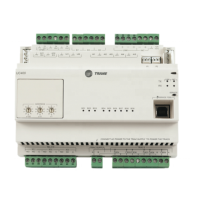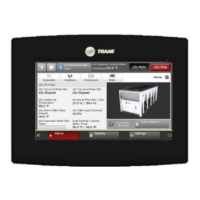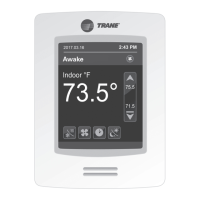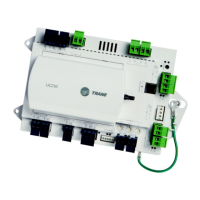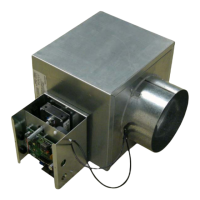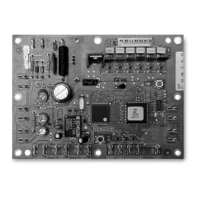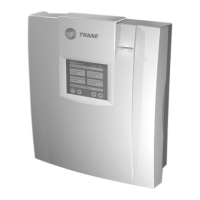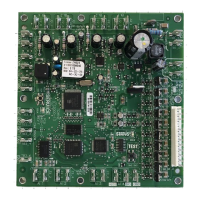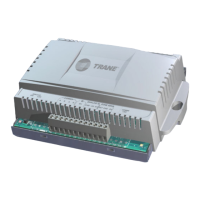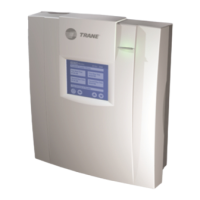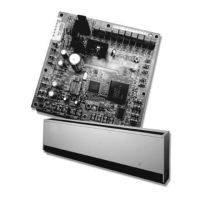Space temperature control
CNT-SVX05B-EN 35
Point 2 on the curve indicates the active heat setpoint. The space temper-
ature must fall below the active heat setpoint before the controller can
change to heating. Conversely, the space temperature must rise above the
active cooling setpoint before the controller can change to cooling.
Point 3 on the curve indicates the point at which the controller switches
to heat (from cool) after the error integrator exceeds 900°F
• seconds.
The controller must be able to heat before it will switch to heat. A unit
that cannot heat will not switch to heat. A unit that cannot cool will not
switch to cool.
Heat/cool changeover: error integration example
If the active space temperature is 66.5°F, the current mode is cooling, the
cooling capacity is 0°F, and the space cooling setpoint is 70°F. The error
calculation is 70 – 0.5 – 66.5 = 3°F. If the same error exists for 60 seconds,
the error integration term is (3°F
• 60 seconds = 180°F seconds). There-
fore, after five minutes (3°F
• 300 seconds = 900°F seconds), the controller
will switch from cooling to heating mode if the space temperature is below
the occupied heating setpoint.
Cooling operation
The heating and cooling space setpoint high and low limits are always
applied to the occupied and occupied standby setpoints. During the cool-
ing mode, the Tracer AH540/541 controller attempts to maintain the
active space temperature at the active space cooling setpoint. Based on
the controller occupancy mode, the active space cooling setpoint is one of
the following:
• Occupied cooling setpoint
• Occupied standby cooling setpoint
• Unoccupied cooling setpoint
The cooling outputs are controlled based on the unit configuration and
the required machine cooling capacity. At 0% machine cooling capacity,
the cooling valve is closed and the outdoor air damper is at its minimum
position. As the required machine cooling capacity increases, the cooling
valve and/or the outdoor air damper opens above their minimum posi-
tions.
The discharge air temperature control algorithm calculates a desired dis-
charge air temperature to maintain the space cooling setpoint. Cool
capacity is controlled to achieve the desired discharge air setpoint. Heat
capacity can also be used to temper cold outdoor air conditions to main-
tain ventilation and the discharge air setpoint.
The outdoor air damper is used for cooling whenever economizing is pos-
sible and there is a need for cooling. If economizing is not possible, it will
not be used in cooling. If economizing is possible, it is always the first
stage of cooling. See “Outdoor air damper operation” on page 56 for more
information.
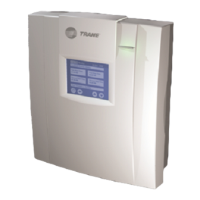
